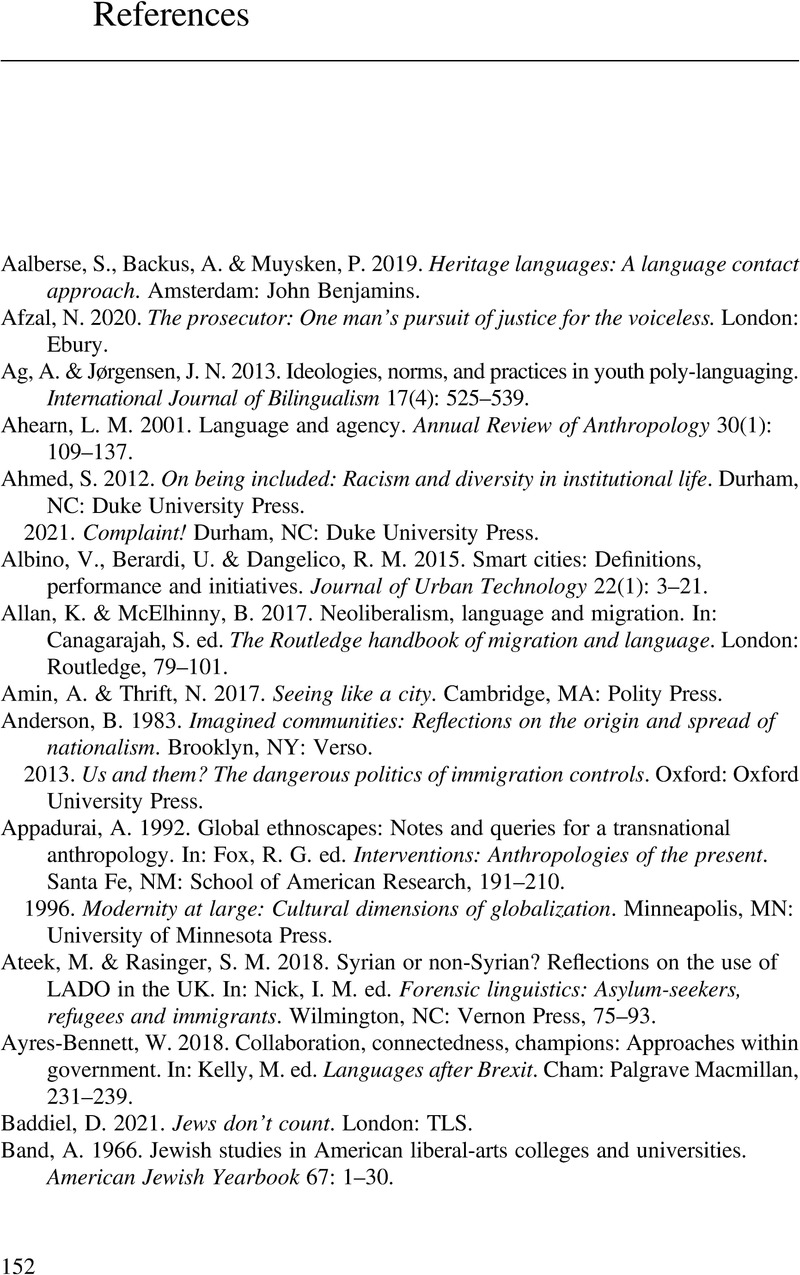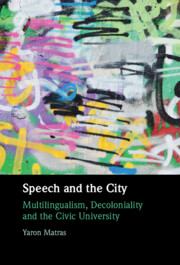Book contents
- Speech and the City
- Speech and the City
- Copyright page
- Dedication
- Contents
- Disclaimer in Regard to Website Content
- Preface
- Acknowledgements
- 1 Linguaphobia
- 2 The City as Multilingual Utopia
- 3 (Re)claiming Knowledge
- 4 Access and Agency
- 5 Heritage and Skills
- 6 Celebration and Citizenship
- 7 Academia and Advocacy
- 8 The Mirage of the Civic University
- References
- Index of Names
- Index of Subjects
- References
References
Published online by Cambridge University Press: 23 May 2024
- Speech and the City
- Speech and the City
- Copyright page
- Dedication
- Contents
- Disclaimer in Regard to Website Content
- Preface
- Acknowledgements
- 1 Linguaphobia
- 2 The City as Multilingual Utopia
- 3 (Re)claiming Knowledge
- 4 Access and Agency
- 5 Heritage and Skills
- 6 Celebration and Citizenship
- 7 Academia and Advocacy
- 8 The Mirage of the Civic University
- References
- Index of Names
- Index of Subjects
- References
Summary

- Type
- Chapter
- Information
- Speech and the CityMultilingualism, Decoloniality and the Civic University, pp. 152 - 170Publisher: Cambridge University PressPrint publication year: 2024

